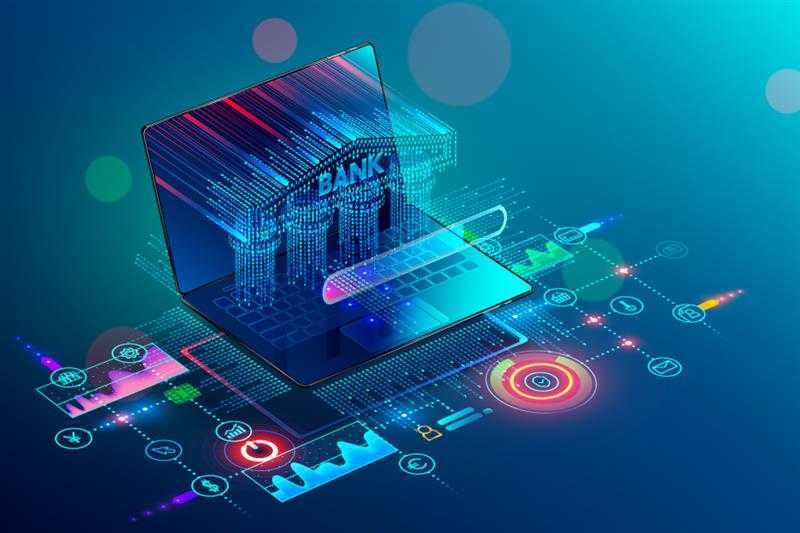Edge computing is the present and future of every industry now. IoT is the popular driver of the demand for edge computing today. The rising demand for real-time communicable systems and devices is driving edge growth. Organisations must begin embracing distributed data centres to facilitate dynamic edge computing and host content closer to their customer for seamless experience.

Data is everywhere. The era of digitalisation has resulted in mammoth amounts of data. With the burgeoning growth in its use case, there is a rising demand for easier transmission.
Organisations are striving to look for easier transmission of data across the Internet of Things (IoT) devices. Measures like redesigning architecture, reanalysing data centres, and skimming and managing data occur. According to a recent report by Statista, organisations store 50% of their enterprise data on the cloud.
As the Internet of Things (IoT) becomes more pervasive, we see a rising number of IoT devices. These devices constantly generate data. Data is evaluated in real-time to give seamless results. However, this requires smoother data processing mechanisms and architecture to support the same.
Storing data in cloud platforms or centralised centres results in longer processing due to higher bandwidths and data queueing. The increasing physical distance between data centres and connected devices causes higher latency and redundant data flows. Edge computing is one such ideal solution for the same.
Edge Computing: An Overview
Edge computing is designed to process data where it originates or as close to the source as possible. In other words, it means decentralising computing power and placing it towards the source of data generation. Edge computing plays a vital role in providing smooth data flows to and from data centres while maintaining confidential data on-premise.
It solves the biggest challenge of cloud platforms: information latency. Organisations may have facilities or factories spread across distant geographies. Hence, distance data centres eventually hamper digital processes and performances of organisations and connected devices.
Edge computing means decentralised data processing, that is, at the edge of the network. Data from intelligent devices is collected through sensors. These sensors are located in machines that have software to collect data. These machines enable the smart device to connect to an IoT environment.
Advantages of Processing Sensor Data at the Edge
Enhanced Data Processing Speed
Traditionally, data is collected at the edge and sent to servers, which further send that data to centralised servers for data processing. However, data is transmitted back to any centralised data centre in an edge infrastructure. Instead, the data is collected and processed at the network's edge.
Computing on edge enables devices to respond faster to the processed data flowing in, thus enabling rich real-time outputs.
Frees Up Bandwidth
Processing data at the network's edge derives a lesser volume of data flowing to and from central servers. The network can free up much bandwidth used across the system. The system is also able to combat data-centric workloads and omit unnecessary bottlenecks.
Moreover, it offers users faster performance with their smart devices because their local network doesn't struggle for limited bandwidth resources.
Local Storage of Data
Broadband data must be available locally to facilitate big data edge computing. It is not easy to transmit large amounts of data in real-time. Hence, distributed data centres can store corresponding data at the network edge and circumvent the issue.
Real-time Monitoring
Edge computing allows gathering and processing data and even constant monitoring of connected smart devices. Companies can integrate machine learning algorithms and enable real-time status monitoring.
Easier Management of Data
Generally, data gathered at the edge contains much superfluous information. Such an architecture calls for powerful analytical tools to sift out the needed information from the mammoth troves of data. Thus, it results in unnecessary exhaustion of bandwidth resources, slowness in data processing, and information latency.
A well-defined edge computing infrastructure uses the connected local devices and edge data centres to manage the data effectively. Edge computing gathers data and processes only that is necessary. This processed data is then transmitted back to the core.
Use Cases of Edge Computing
Edge computing has gained much traction in recent years. Its expansion has resulted in many applications and capabilities. Let us take a look at some of the well-known use-cases of edge computing.
Edge Computing in Shopping
The retail and shopping industry is one of the major industries to adopt edge computing. The industry is always looking for ways to magnify the shopping experience. In the retail space, edge computing has contributed to making backends run smoothly and efficiently, offering personalised in-store experiences to shoppers and more.
For example, malls have integrated real-time and human-reactive mixed reality mirrors in changing rooms. Moreover, edge computing facilitates retailers to give up dedicated hardware to run such applications. Retails may prefer this because they can save much-needed space – especially when the lease is high.
Edge Computing in Healthcare
The health industry constantly deploys new and fascinating technologies to create impressive and innovative care models. Today, we see artificial intelligence and machine learning applications in healthcare almost everywhere.
One such example is wearable devices that can monitor a patient's heart rate and blood pressure, AI-powered X-ray monitors, and more. Edge can remove sensitive information from the device to ensure privacy and security.
Edge Computing in Manufacturing
Manufacturing is adopting modern technological advancements to increase efficiency, enhance productivity, and modernise operations to reduce costs and save time.
Today, we see manufacturers across the globe introducing advanced robots and machinery. Edge computing allows machine-to-machine communication among factories at the edge.
There are multiple examples of edge in action in the manufacturing industry. There are trackers to monitor machine cycles, sheet metal scanners to detect fatigue, and more.
Edge Computing in OTT Video Delivery
Video buffering and stalls result from increased users on an OTT (over-the-top) network. More users mean less bandwidth per user. The usage of transmission control protocol (TCP) negatively impacts the video delivery network by reducing effective bandwidth.
With multi-access edge computing, content providers and delivery networks can experience cloud-computing capabilities at the network's edge. It enhances network infrastructure deployments by allowing operators to open their RAN to third parties.
Edge Computing in Gaming
Even milliseconds matter in gaming. It is highly bandwidth-demanding and compute-intensive. Gaming requires downloading high-quality graphics, 3D scene rendering, large-scale data management, and a lot more.
Far-located data centres contribute to latency and redundancy and even higher costs. Here is where edge computing plays an important role. It offers low-latency compute, reduces costs, and optimises connections to make them highly responsive.
The Future of Edge Computing
Edge computing is the present and future of every industry now. IoT is the popular driver of the demand for edge computing today. The rising demand for real-time communicable systems and devices is driving edge growth.
Companies must begin embracing distributed data centres to facilitate dynamic edge computing. They must simultaneously strategise the utility of cloud computing applications and smart devices.
Although local intelligence and data processing at the edge resides at the very bottom in the technology stack, it is the fuel for all business process engines. Hence, it must be made as efficient and high quality as possible.
Why Choose Nxtra?
Nxtra can help you get started with edge computing. We design, build, and operate India's largest network of edge data centres. Businesses can smoothly plan out their strategic digital roadmaps with our rich ecosystem and fully-equipped facilities.
With our robust and always available network, we bring possibilities of building innovative edge solutions for businesses. Transform your organisation's infrastructure with us.






_1724410758.jpg)
